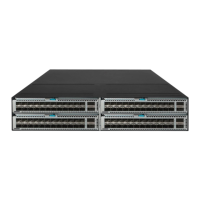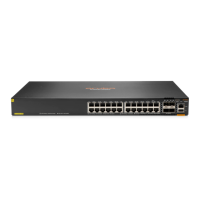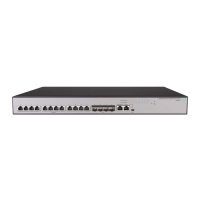313
530BConfiguring the routing policy
A routing policy on an ASBR performs the following operations:
• Assigns MPLS labels to routes received from the PEs in the same AS before advertising them
to the peer ASBR.
• Assigns new MPLS labels to the labeled routes to be advertised to the PEs in the same AS.
The configuration is the same as that in the Inter-AS IPv4 VPN option C solution. For more
information, see "
843HConfiguring inter-AS option C."
107B
Configuring an OSPFv3 sham link
Before you configure an OSPFv3 sham link, configure basic IPv6 MPLS L3VPN (OSPFv3 is used
between PE and CE).
271BConfiguring a loopback interface
Step Command Remarks
1. Enter system view.
system-view
N/A
2. Create a loopback interface
and enter loopback interface
view.
interface loopback
interface-number
By default, no loopback
interfaces exist.
3. Associate the loopback
interface with a VPN
instance.
ip binding vpn-instance
vpn-instance-name
By default, the interface is
associated with no VPN
instance.
4. Configure an IPv6 address
for the loopback interface.
For configuration details, see Layer
3—IP Services Configuration Guide.
By default, no IPv6 address is
configured for the loopback
interface.
272BRedistributing the loopback interface address
Step Command Remarks
1. Enter system view.
system-view
N/A
2. Enter BGP instance view.
bgp
as-number [
instance
instance-name ]
[
multi-session-thread
]
N/A
3. Enter BGP-VPN instance
view.
ip vpn-instance
vpn-instance-name
N/A
4. Enter BGP-VPN IPv6
unicast address family
view.
address-family ipv6
[
unicast
] N/A
5. Redistribute direct routes
into BGP (including the
loopback interface
address).
import-route direct
By default, no direct routes are
redistributed into BGP.

